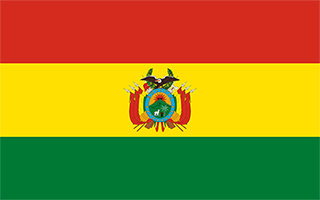Facts and Data
Webpages:
Official Unesco Page
Basis Data:
Unesco World heritage since: 1990
Size of heritage:
Coordinates:
Longitude: -59,500°
Latitude: -16,000°
Summary
Between 1696 and 1760, six ensembles of reducciones (settlements of Christianized Indians) inspired by the ‘ideal cities’ of the 16th-century philosophers were founded by the Jesuits in a style that married Catholic architecture with local traditions. The six that remain – San Francisco Javier, Concepción, Santa Ana, San Miguel, San Rafael and San José – make up a living heritage on the former territory of the Chiquitos.
Location on Map
Show bigger map on Openstreetmap
Introduction
The Jesuit Missions of the Chiquitos, located in the Department of Santa Cruz, Bolivia, is a UNESCO World Heritage site that holds immense historical and cultural significance. These missions were established by the Jesuit order in the 17th and 18th centuries with the aim of converting indigenous populations to Christianity. Today, they stand as a testament to the architectural and artistic achievements of the Jesuits and the indigenous communities they worked with.
History
The Jesuit Missions of the Chiquitos were founded between 1691 and 1760, during the Spanish colonial period. The Jesuits, led by Father Martin Schmid, arrived in the Chiquitania region to evangelize the indigenous tribes, including the Chiquitano, Guarayo, and Ayoreo peoples. The missions were established as self-sufficient communities, combining religious, agricultural, and educational activities.
The Jesuits brought with them European architectural and artistic styles, blending them with local indigenous techniques and materials. The result was a unique fusion of European Baroque and indigenous craftsmanship, creating a distinctive architectural style known as "Chiquitano Baroque." The missions became centers of religious and cultural life, with churches, schools, workshops, and living quarters for the indigenous population.
Current State
Today, the Jesuit Missions of the Chiquitos are a well-preserved UNESCO World Heritage site, attracting visitors from around the world. The six main mission towns included in the site are San Javier, Concepción, San Ignacio de Velasco, San Miguel de Velasco, San Rafael, and Santa Ana. Each town has its own unique architectural and cultural characteristics.
The churches within the missions are the most remarkable structures, showcasing the Chiquitano Baroque style. These churches feature intricate carvings, vibrant frescoes, and ornate altarpieces. The use of local materials such as adobe, wood, and straw is evident in the construction, reflecting the integration of European and indigenous techniques.
The missions continue to serve as active religious centers, with regular masses and religious festivals. The local communities are actively involved in the preservation and maintenance of the missions, ensuring their cultural and historical significance is upheld.
In recent years, efforts have been made to promote sustainable tourism in the region, allowing visitors to experience the rich cultural heritage of the Jesuit Missions. Tourists can explore the missions, attend concerts featuring traditional music, and participate in workshops to learn about traditional crafts and techniques.
The Jesuit Missions of the Chiquitos have not only preserved their architectural and artistic heritage but have also contributed to the cultural identity of the local communities. The missions serve as a reminder of the historical encounter between European colonizers and indigenous peoples, showcasing the resilience and creativity of the Chiquitano culture.
In conclusion, the Jesuit Missions of the Chiquitos in Bolivia's Department of Santa Cruz are a UNESCO World Heritage site that represents the fusion of European and indigenous cultures. These missions, with their unique Chiquitano Baroque style, continue to be active religious centers and attract visitors who appreciate their historical and cultural significance. The preservation and promotion of these missions contribute to the understanding and appreciation of Bolivia's diverse cultural heritage.
